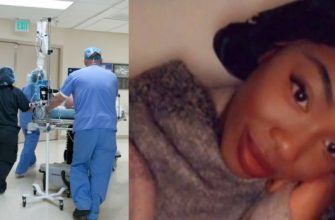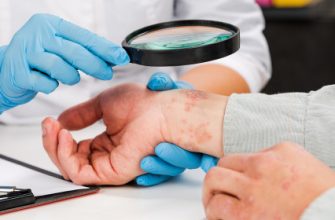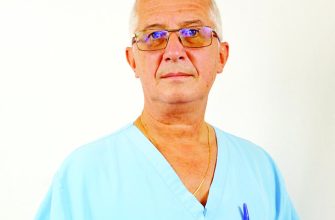For patients in underserved communities, receiving a cancer diagnosis and treatment as promptly as possible can be a challenge.
Establishing an outreach program at Dana-Farber Cancer Institute that brought cancer diagnostic services and patient navigation to a community health center in Boston reduced the time for cancer diagnoses from a median of 32 days to just 12, new research found.
Among the patients referred to the program with a new or existing diagnosis, two thirds received a treatment plan from Dana-Farber providers and almost 30% received a surveillance plan. All patients with a history of cancer who had been lost to follow-up were reconnected with care.
The program also impacted clinical trial enrollment, with 10% of the cohort and 24% of patients diagnosed with cancer enrolled in a clinical trial at Dana-Farber compared with historical rates for marginalized populations of about 5%.
Providing services within Federally Qualified Health Centers (FQHCs) and other community health settings “can bridge the gap between community-based and specialty clinics and providers, and might be a way to strengthen the delivery of cancer-related services to historically marginalized communities,” senior author Christopher Lathan, MD, MPH, chief clinical access and equity officer at Dana-Farber, Boston, and colleagues write.
The study was published online in JCO Oncology Practice on March 20.
In 2012, Lathan and colleagues began a program that brought both diagnostic and navigation services for patients with cancer to a local community health center, which provides primary care and other health services to a predominantly Black patient population.
Primary care clinicians at the FQHC referred patients to the program for cancer-related concerns, including prevention services or diagnostic evaluations.
The clinical team from Dana-Farber reviewed patients’ records, and an oncology nurse navigator steered patients to their next step, which included genetic counseling, lung cancer screening, further diagnostics for suspected cancers, as well as treatment at Dana-Farber or another location. The nurse navigator also oversaw appointment scheduling, care coordination, and helped resolve insurance and financial challenges.
The study population received cancer-related services through the outreach program between January 2012 and July 2018. Eligible patients had at least one clinical visit at the outreach program. The informed consent process occurred in person, and interpreters were used when needed to facilitate the process in languages aside from English.
Overall, 366 people enrolled in the study, two thirds of whom were Black, 16% were Hispanic, and about 10% were White. The most common reasons for referral to the program were evaluation for cancer (22%), lung cancer screening/smoking cessation counseling (22%), cancer genetic counseling and testing (22%), and hematologic consults (19%).
Overall, 22% of patients (n = 82) had a cancer diagnosis and 46% had a benign hematologic issue. The median time to diagnostic resolution for those with no cancer diagnosis was 28 days but was 12 days for those with a cancer diagnosis compared with 32 days before implementing the outreach program.
All patients referred to the program for a new or existing diagnosis (n = 38) were referred to Dana-Farber. Of these patients, two thirds received a treatment plan and 29% received a surveillance plan. All patients with a history of cancer who had been lost to follow-up (n = 37) were reconnected with care.
Among the 284 patients without a cancer diagnosis, 56% received a surveillance plan and 42% were referred to their primary care clinician because the issue did not require further workup.
The authors were also “surprised to find” that 1 in 10 patients enrolled in a clinical trial, given that the “initiative was not designed to directly affect clinical trial enrollment.”
Overall, two thirds of the cohort reported somewhat or extreme difficulty paying their monthly bills.
“The nurse navigator is a tremendous benefit,” said Abisola Olulade, MD, a family medicine physician and community provider in San Diego, California, who was not involved in the research. “Underserved patients often fall through the cracks [but] they can get their questions answered by the navigator. Oncology nurse navigation services should be considered a standard of cancer treatment.”
The authors highlighted several limitations to the study, including that the cohort was relatively small and cost was not included in the analysis. Olulade noted that implementing this type of model may require a hefty investment.
“Any additional staffing requirements beyond the primary care doctor’s office would pose a challenge if there is a shortage of people to fill those roles,” Olulade added.
Overall, though, the authors concluded that “small interventions, developed in conjunction with the community, are crucial to building trust and addressing cancer-related disparities sustainably.”
The study was supported by a grant from the Robert and Myra Kraft Family Research Foundation’s Kraft Family Research Fund at Dana-Farber Cancer Institute. Lathan reports a consulting or advisory role with Lilly and Bristol-Myers Squibb Foundation. Co-author Mark Drews, MD, is an employee of JJM Anesthesia Associates and reports stock and other ownership interests with Pfizer.
JCO Oncology Practice. Published online March 20, 2023. Full text
For more from Medscape Oncology, join us on Twitter and Facebook








